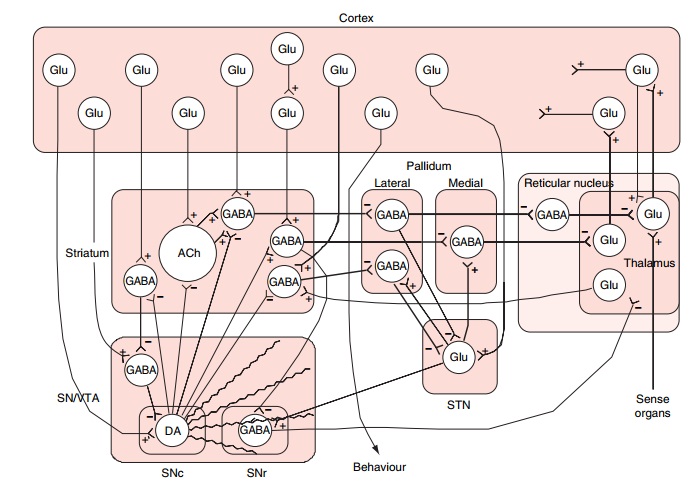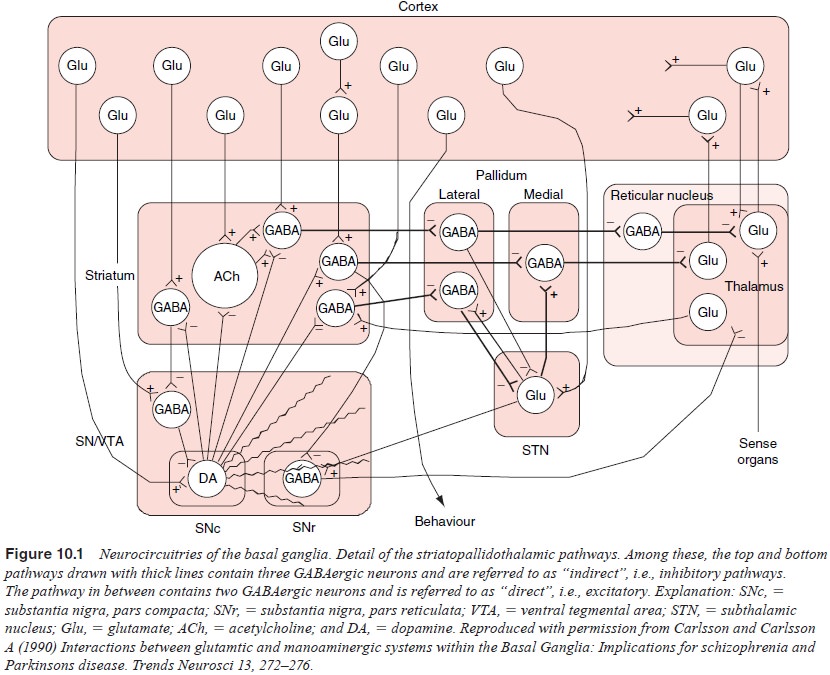Chapter: Essentials of Psychiatry: Psychiatric Pathophysiology: Schizophrenia
Preclinical Studies Relevant to the Pathophysiology of Schizophrenia

Preclinical Studies Relevant to
the Pathophysiology of Schizophrenia
Several classes of drugs capable of inducing
psychosis in humans act as behavioral stimulants in its stereotyping and has
lost the rich exploratory rep-ertoire. Tentatively, such abnormal behavior can
be looked upon as a model of psychosis with both positive and negative symptom
elements and a cognitive deficit component. Examples of psy-chotomimetic drugs
inducing such abnormal behavior are the dopamine-receptor agonists acting
directly or indirectly and the glutamatergic antagonists acting on the NMDA-sensitive
gluta-mate receptor.
Multiple observations regarding these systems
suggest that glutamatergic pathways, presumably emanating from the cerebral
cortex, exert a strong inhibitory and stabilizing effect on an array of
subcortical, potentially psychosis-inducing mecha-nisms, involving both
monoaminergic and cholinergic path-ways. The mechanism underlying this
stabilizing glutamatergic function appears to be complex. In part it seems to
be located postsynaptically to the (limbic) striatum, where corticostriatal
pathways control both direct and indirect striatopallidothalamic pathways, as
detailed in Figure 10.1. These pathways appear to regulate the sensory input to
the cerebral cortex as well as the arousal. The direct and indirect pathways
are mutually antago-nistic, the former being activating and the latter
inhibitory on the thalamocortical glutamatergic projections. Both the direct
and the indirect pathways are also controlled by dopaminergic projections,
whereby the former are activating (via D1 receptors) and the latter
inhibitory (via D2 receptors). In addition, glutama-tergic and
glutamatergic/GABAergic pathways seem to control the monoaminergic neurons
themselves by means of an accelera-tor and a brake mechanism, respectively
(Carlsson et al., 2001). These
observations support glutamatergic involvement in schiz-ophrenia and emphasize
the interaction of glutamate with other, largely subcortical transmitter
systems and open up possibilities for a multifactorial dysregulation in complex
neurocircuits where,

besides glutamate, GABAergic, monoaminergic and
cholinergic systems participate in the psychotogenic process (Carlsson and
Carlsson, 1990).
Several drugs in different states of development
will prob-ably shed additional light on the multifactorial aspects of
psycho-togenesis, for example, agonists acting at the glycine site of the NMDA
receptor, glycine-reuptake inhibitors, ampakines, drugs acting on the
metabotropic glutamate receptors, partial dopamine receptor agonists and
dopaminergic stabilizers lacking intrinsic activity on dopamine receptors
(Carlsson et al., 2001).
Related Topics